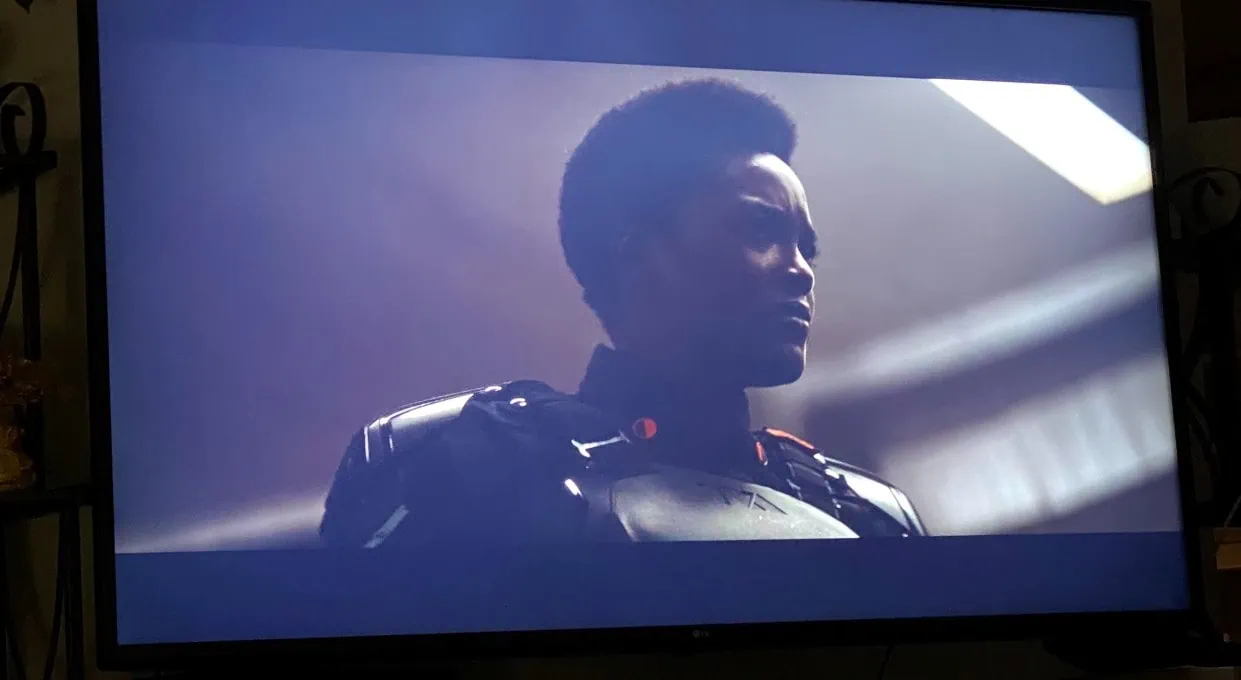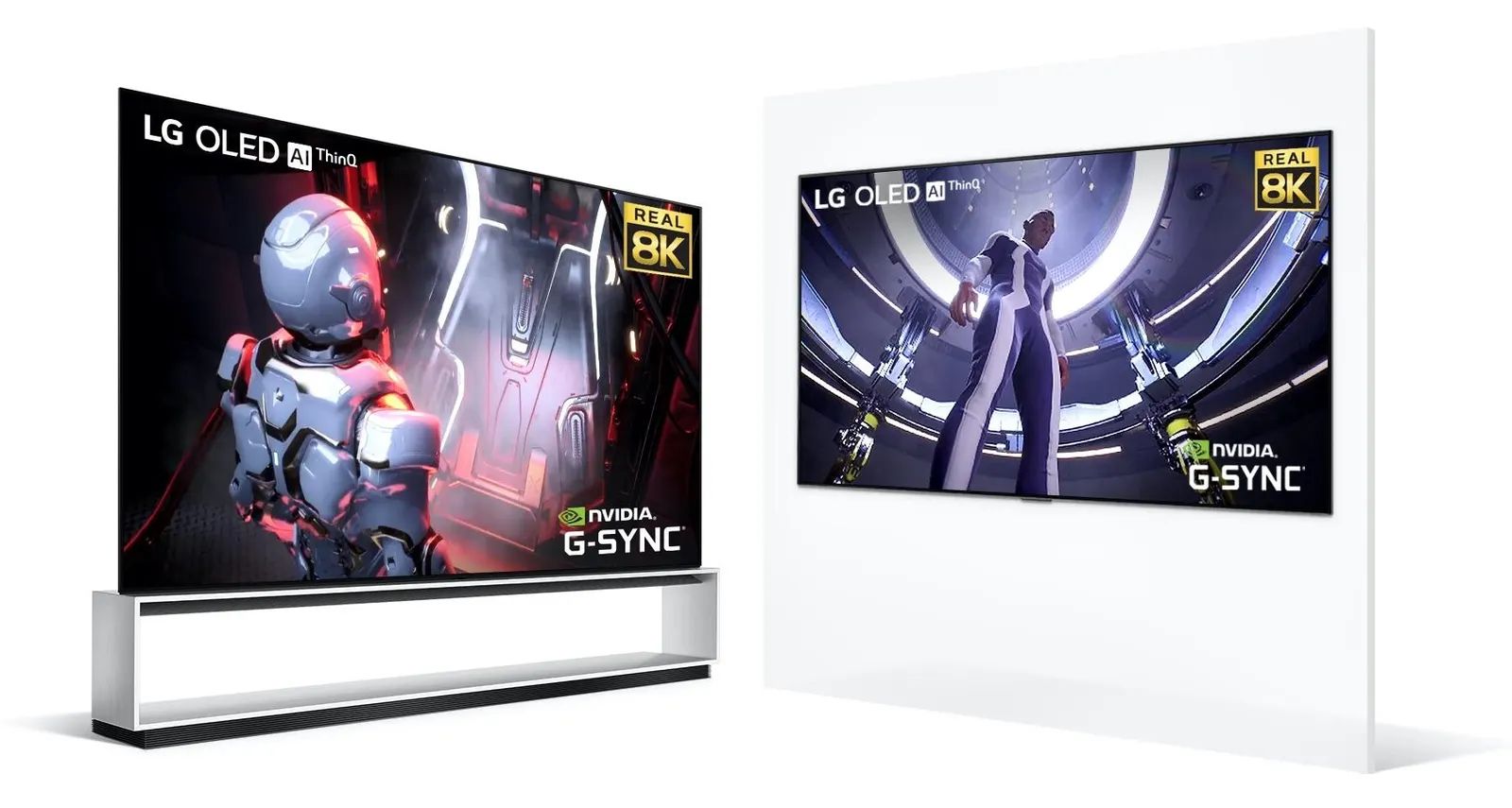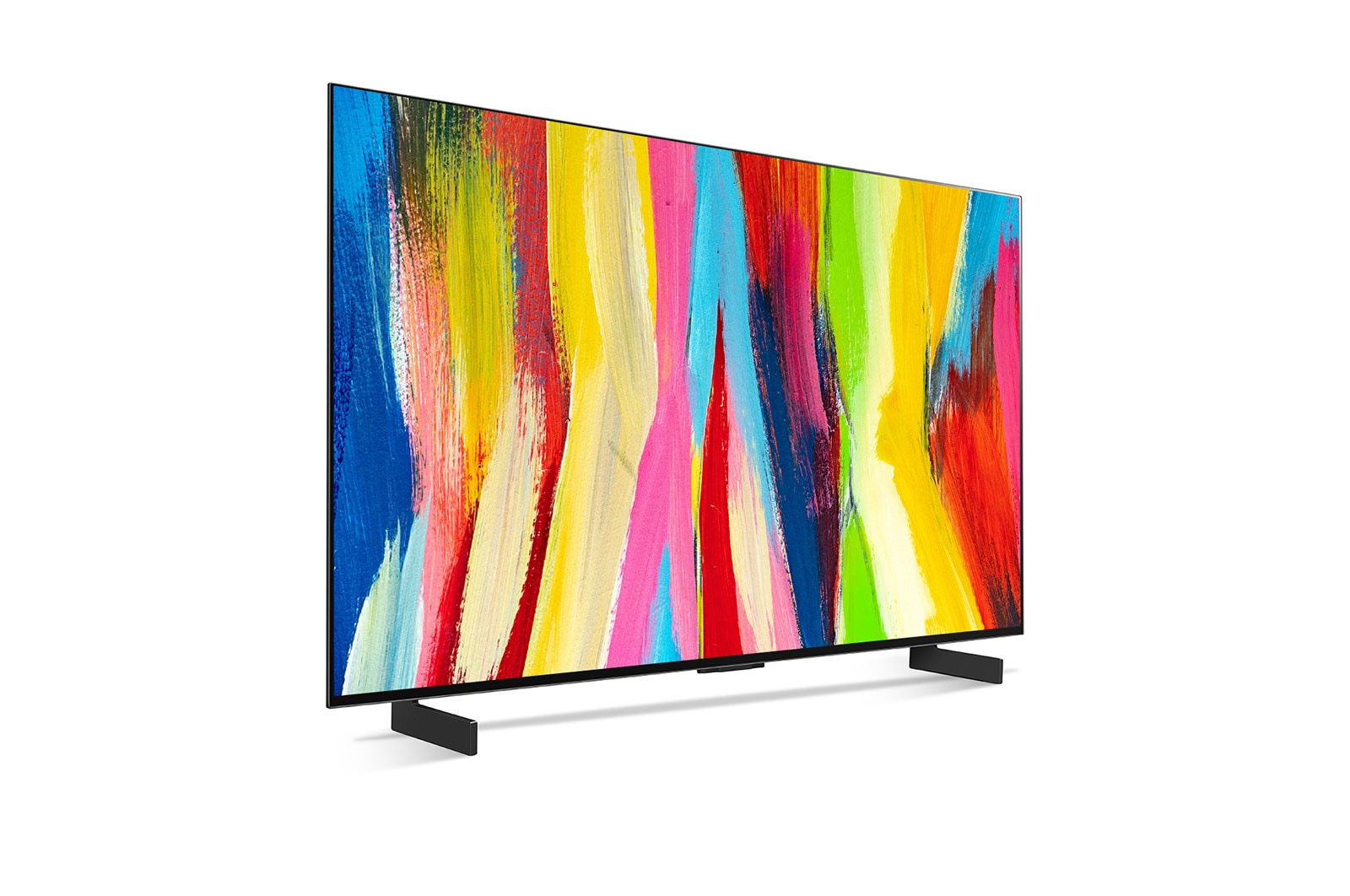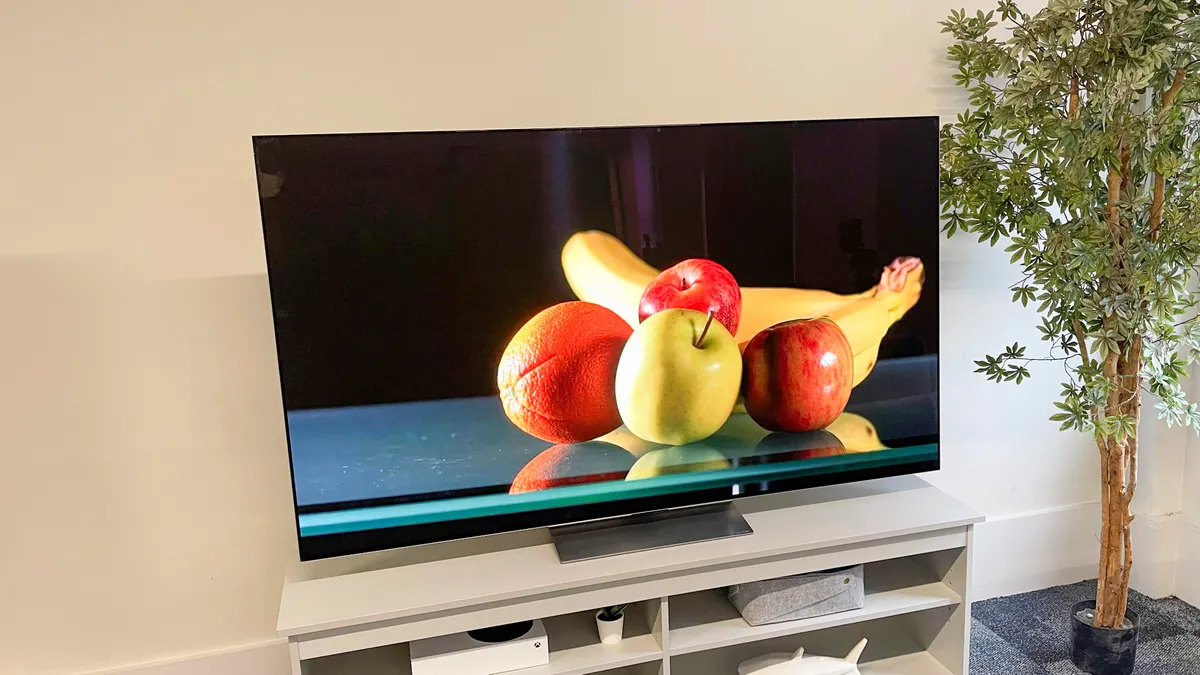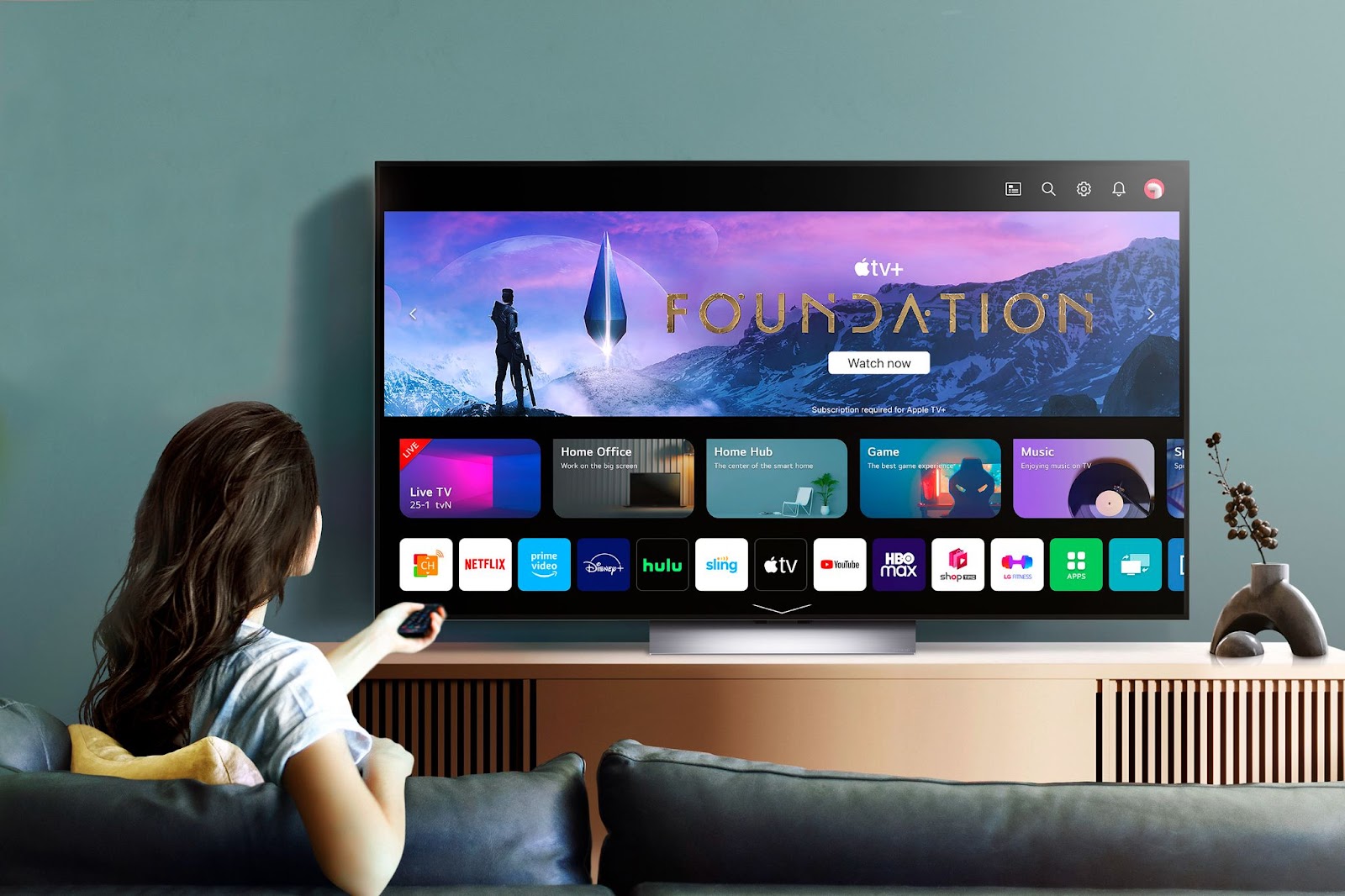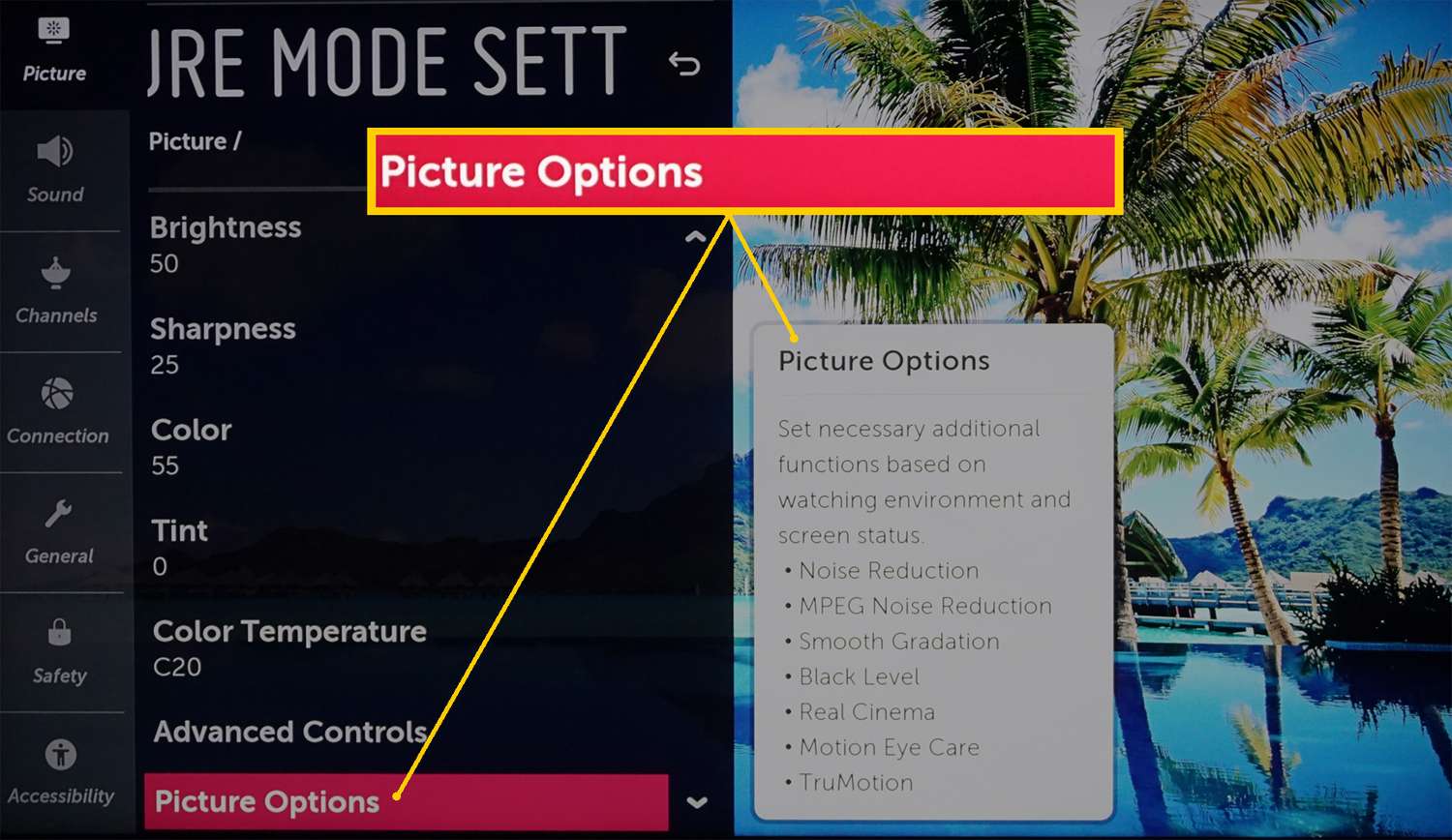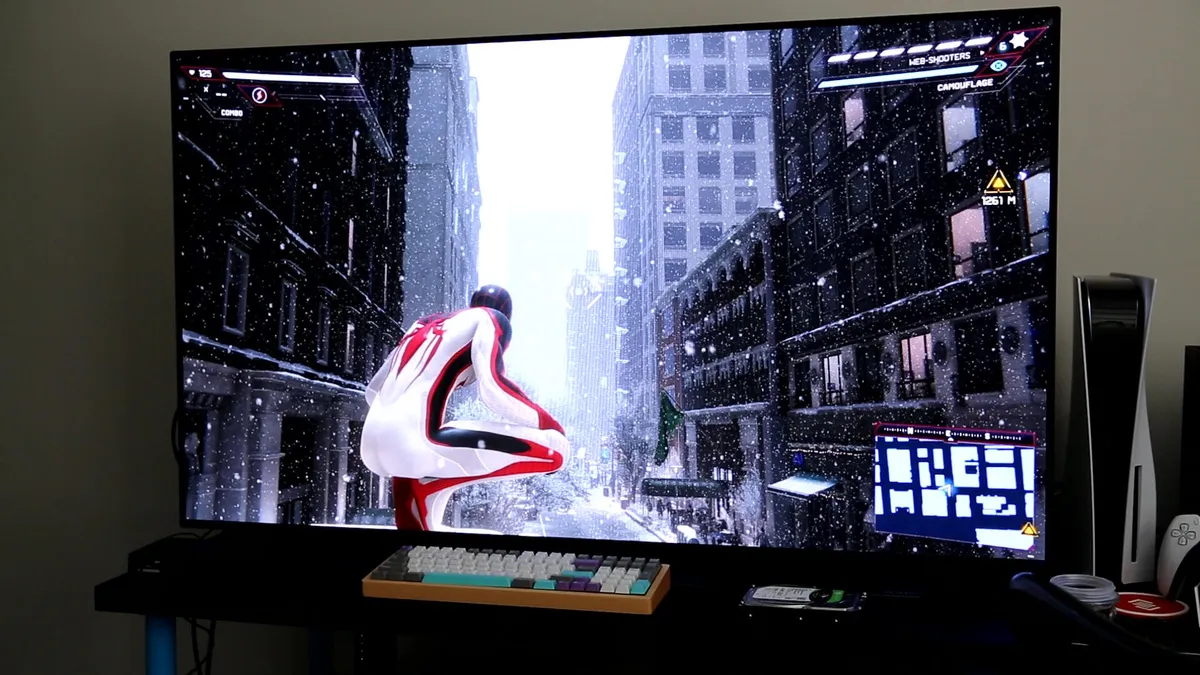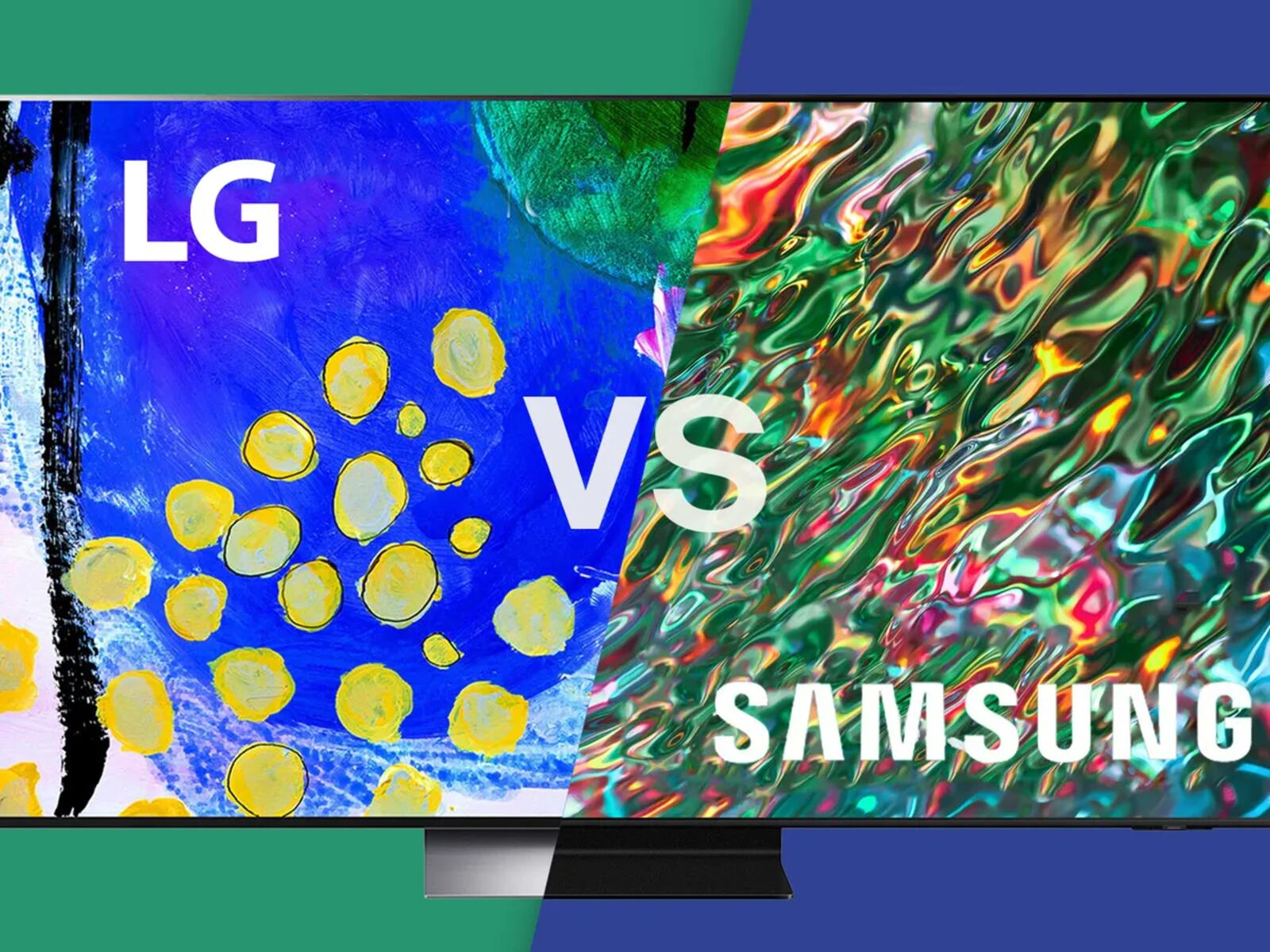Introduction
Having a dark screen on your LG Smart TV can be a frustrating experience, as it hinders your ability to fully enjoy your favorite shows and movies. There are several factors that can contribute to a dark screen, ranging from incorrect settings to hardware issues. In this article, we will explore some of the possible reasons for a dark LG Smart TV screen and provide helpful solutions to resolve the issue.
It’s important to note that troubleshooting a dark screen can vary depending on the specific model of LG Smart TV you own. However, the solutions discussed here are generally applicable and should give you a good starting point in resolving the problem.
If you find that your LG Smart TV screen is not as bright as it should be, there are a few potential causes to consider. First, it could be due to incorrect brightness settings. The TV’s brightness may have accidentally been set too low, resulting in a dim display. Additionally, the energy saving mode on your TV might be activated, which can dim the screen to conserve power. Another possibility is that the backlight, responsible for illuminating the screen, may be malfunctioning or in need of calibration. Lastly, the ambient lighting in the room where the TV is located could be affecting the perceived brightness of the screen.
In the following sections, we will guide you through the steps to adjust the brightness settings, check the energy saving mode, troubleshoot the backlight, calibrate the picture settings, optimize the ambient lighting, and check for software updates. These simple solutions can help restore the brightness of your LG Smart TV screen and ensure an optimal viewing experience.
Possible Reasons for a Dark LG Smart TV Screen
There are several potential reasons why your LG Smart TV screen may appear dark. Understanding these possible causes can help you identify and troubleshoot the issue more effectively.
One common reason for a dark screen is incorrect brightness settings. It’s possible that the brightness level on your LG Smart TV has been inadvertently set too low. This can make the screen appear dim and difficult to see, especially in well-lit environments. Adjusting the brightness settings can often resolve this issue and restore the screen’s brightness to its optimal level.
Another factor to consider is the energy saving mode. Energy-saving features are designed to reduce power consumption by controlling the screen brightness and other settings. If the energy-saving mode is enabled on your LG Smart TV, it may be dimming the screen to conserve energy. You can check the TV’s settings menu to see if this feature is activated and disable it if necessary.
The backlight of your TV can also contribute to a dark screen. The backlight is responsible for illuminating the pixels on the screen, allowing you to see the images displayed. If the backlight is malfunctioning or not properly calibrated, it can result in a dim or dark screen. In such cases, troubleshooting the backlight or seeking professional assistance may be required to rectify the issue.
Incorrect picture settings can also impact the brightness of your LG Smart TV screen. Factors such as contrast, sharpness, or color settings that are improperly configured can affect the overall brightness and clarity of the display. Calibrating the picture settings to match your preferences and the viewing environment can significantly improve the brightness and quality of the screen.
A less obvious factor to consider is the ambient lighting in the room where your LG Smart TV is located. In brightly lit rooms, the perceived brightness of the screen may be affected, making it appear darker than it actually is. Ensuring proper ambient lighting by reducing glare and adjusting the position of light sources can help enhance the visibility and brightness of the screen.
Lastly, it’s important to check for software updates for your LG Smart TV. Manufacturers often release firmware updates to improve the performance and address any known issues with their devices. Updating your TV’s software can resolve bugs or glitches that may be causing a dark screen.
By considering these possible reasons for a dark LG Smart TV screen, you can take the necessary steps to troubleshoot and resolve the issue effectively. In the following sections, we will provide detailed instructions on adjusting the brightness settings, checking the energy saving mode, troubleshooting the backlight, calibrating the picture settings, optimizing the ambient lighting, and checking for software updates.
Adjusting the Brightness Settings
If you find that your LG Smart TV screen is too dark, adjusting the brightness settings may solve the problem. Follow these steps to make the necessary adjustments:
- Using your LG Smart TV remote control, press the “Settings” or “Menu” button.
- Navigate to the “Picture” or “Display” settings. The exact name may vary depending on your TV model.
- Locate the “Brightness” or “Backlight” option. Adjust the slider or numerical value to increase the brightness level.
- Keep making small adjustments until you achieve the desired brightness. Remember to give the TV a few moments to apply the changes after each adjustment.
- Once you are satisfied with the brightness level, press the “Exit” or “Back” button to save your settings.
It’s important to note that the location of the brightness settings may vary depending on your LG Smart TV model and the firmware version. If you are unable to locate the exact option, consult your TV’s user manual for specific instructions.
Furthermore, it’s worth mentioning that while increasing the brightness can improve visibility in darker scenes, excessive brightness levels can lead to reduced image quality and strained eyes. Find a balance that provides both optimal brightness and comfortable viewing experience.
After adjusting the brightness settings, check if the screen appears brighter and more visible. If the issue persists, continue with the following troubleshooting steps.
Checking the Energy Saving Mode
One of the reasons why your LG Smart TV screen may appear dark is the activation of the energy saving mode. This feature is designed to reduce power consumption by adjusting various display settings, including the brightness. Follow these steps to check and disable the energy saving mode:
- Using your LG Smart TV remote control, press the “Settings” or “Menu” button.
- Navigate to the “General” or “System” settings.
- Select the “Quick Settings” or “More Options” option.
- Look for the “Energy Saving” option and select it.
- Depending on your LG Smart TV model, you may find different energy saving modes such as “Low,” “Medium,” or “High.” If the Energy Saving mode is already set to “High,” try reducing it to a lower setting or disabling it entirely.
- If you choose to disable the energy saving mode, select the “Off” option.
- Press the “Back” or “Exit” button to save your settings.
Keep in mind that the exact location and naming of these settings may vary depending on your LG Smart TV model. If you are unable to find the energy saving mode option, refer to your TV’s user manual for specific instructions.
After disabling the energy saving mode, check if the screen brightness improves. If the issue persists, proceed to the next troubleshooting step.
Troubleshooting the Backlight
If adjusting the brightness settings and disabling the energy saving mode did not resolve the issue, the problem may be related to the TV’s backlight. The backlight is responsible for illuminating the screen and if it is malfunctioning or improperly calibrated, it can result in a dark display. Here are some troubleshooting steps to help you address the backlight issue:
- Turn off your LG Smart TV and unplug it from the power source.
- Inspect the TV screen for any visible signs of damage or loose connections. Check for physical damage to the backlight panel or any loose cables that may be affecting the backlight’s functionality. If you notice any issues, it might be necessary to seek professional assistance for repairs.
- If there are no visible signs of damage, allow the TV to remain unplugged for a few minutes. This will help discharge any residual power and refresh the TV’s internal components.
- Plug the TV back in and turn it on. Pay attention to the backlight when the TV powers on. If there is a noticeable flickering or uneven brightness, it could indicate a backlight issue.
- Access the TV’s settings menu and locate the “Backlight” or “LED Control” option. Increase the backlight intensity to its maximum setting to see if it improves the screen brightness.
- If none of these steps resolve the backlight issue, it may be necessary to contact LG customer support or seek the assistance of a professional technician. They will have the expertise to diagnose and repair any underlying backlight problems.
It’s important to note that attempting to repair the backlight yourself can be challenging and may void your warranty. Therefore, it is recommended to consult with a professional before attempting any major repairs. They will be able to provide the best guidance based on the specific issue and model of your LG Smart TV.
If the backlight troubleshooting does not resolve the dark screen problem, continue to the next section for further solutions.
Calibration of Picture Settings
If your LG Smart TV screen still appears too dark, it may be necessary to calibrate the picture settings to optimize the brightness and overall display quality. Follow these steps to calibrate the picture settings on your TV:
- Using your LG Smart TV remote control, press the “Settings” or “Menu” button.
- Navigate to the “Picture” or “Display” settings. The exact name may vary depending on your TV model.
- Locate the “Picture Mode” or “Presets” option. Select “Standard” or “Cinema” mode for a balanced and natural picture quality.
- Adjust the “Contrast” setting. Increase it slightly to enhance the brightness without compromising image detail.
- Next, adjust the “Brightness” setting. Increase it gradually until you achieve the desired brightness level. Be cautious not to set it too high, as it may result in a washed-out image.
- Proceed to adjust the “Backlight” setting. Increase it moderately to provide sufficient illumination for a brighter screen.
- Consider adjusting the “Color” and “Tint” settings as per your preference. These settings can impact the overall vibrancy and realism of the displayed colors.
- For further fine-tuning, explore the advanced picture settings such as “Sharpness,” “Color Temperature,” and “Gamma” depending on your TV model and personal viewing preferences.
- Take note of the changes you make and evaluate the screen brightness after each adjustment. Bear in mind that optimal picture settings can vary based on your viewing environment and personal preferences.
- Once you are satisfied with the picture calibration, save the settings and exit the menu.
Calibrating the picture settings can help improve the overall brightness and clarity of your LG Smart TV screen. If the dark screen issue persists, proceed to the next troubleshooting step.
Ensuring Proper Ambient Lighting
The ambient lighting in the room where your LG Smart TV is located can have a significant impact on the perceived brightness of the screen. Improper ambient lighting, such as excessive glare or low ambient light levels, can make the screen appear darker than it actually is. To optimize the viewing experience and enhance screen brightness, consider the following steps:
- Assess the room’s lighting conditions. If the room is brightly lit with direct sunlight or harsh artificial light, it can create a glare on the screen, making it difficult to see clearly. Adjusting the position of lighting fixtures or using curtains or blinds to reduce direct sunlight can help minimize reflections and improve screen visibility.
- Alternatively, if the room has insufficient ambient light, it can make the screen appear darker. Adding soft, indirect lighting sources, such as floor or table lamps, can help create a more balanced and comfortable viewing environment.
- Consider the placement of the TV in the room. Optimal positioning can help reduce external light sources from negatively impacting the screen brightness. Avoid placing the TV opposite windows or bright light sources.
- Experiment with different lighting setups to find the best configuration that minimizes glare and provides adequate ambient lighting. Finding the right balance between brightness and comfort is key.
By ensuring proper ambient lighting in the room, you can enhance the perceived brightness of your LG Smart TV screen. Keep in mind that the ideal lighting conditions may vary depending on the specific TV model and the manufacturer’s recommendations.
If adjusting the ambient lighting does not resolve the dark screen issue, continue to the next troubleshooting step.
Checking for Software Updates
Software updates play a crucial role in maintaining the performance and functionality of your LG Smart TV. Outdated software can sometimes result in various issues, including a dark screen. To ensure you have the latest software version installed, follow these steps:
- Using your LG Smart TV remote control, press the “Settings” or “Menu” button.
- Navigate to the “General” or “System” settings.
- Look for the “Software Update” or “Firmware Update” option. Select it.
- If the TV is connected to the internet, choose the “Update Now” or “Check for Updates” option.
- Wait as the TV checks for available software updates. If an update is found, follow the on-screen prompts to download and install it.
- If the TV is not connected to the internet, you can visit the LG support website using a computer or mobile device. Look for the downloads or support section and enter your TV’s model number. If there is a newer software version available, download it to a USB drive.
- Insert the USB drive into one of the USB ports on the TV.
- Access the “Software Update” or “Firmware Update” option and choose “Update Now” or “USB Update.” The TV will detect the software file on the USB drive and guide you through the installation process.
- Once the software update is complete, restart your LG Smart TV.
Checking for software updates is essential, as new updates often include bug fixes, performance enhancements, and improvements that can help resolve issues related to a dark screen. Be sure to periodically check for updates and install them to ensure your TV is running on the latest software version.
If the dark screen issue persists even after updating the software, it may be necessary to contact LG customer support or seek professional assistance for further troubleshooting.
Contacting LG Support
If you have tried all the troubleshooting steps mentioned above and are still experiencing a dark screen on your LG Smart TV, it may be time to reach out to LG customer support for further assistance. Here are the steps to contact LG support:
- Visit the LG official website and navigate to the support section.
- Look for the “Contact Us” or “Support” page.
- Depending on your region, you may find options to contact support via phone, email, or live chat.
- Choose the preferred method of contact and provide all the necessary details, including your TV model, serial number, and a clear description of the issue you are facing.
- If available, provide any troubleshooting steps you have already taken, as this will help the support team understand your situation better.
- Be prepared to answer any additional questions from the support team regarding your TV and the issue you are encountering.
- Note down any reference numbers or case numbers provided by the support team for future reference.
- Follow the instructions and guidance provided by LG support. They may offer further troubleshooting steps or recommend service or repairs if necessary.
Contacting LG support is recommended if you have exhausted all available troubleshooting options and the dark screen issue persists. Their technical experts have the knowledge and expertise to assist you in resolving the problem effectively.
Remember to provide any warranty or purchase information if applicable, as this may affect the available support options or coverage.
By reaching out to LG support, you can ensure that your LG Smart TV receives the necessary attention and that any underlying hardware or software issues causing the dark screen are addressed appropriately.







